For most organizations, implementing an effective SEO (search engine optimization) strategy involves collecting and analyzing significant amounts of keyword, content, analytics and competitive data from various sources.
SEO professionals must then use this data to prioritize keyword, content, structural and/or link tasks to solve problems or build on existing organic search authority.
A well-known prioritization method that works well to help focus attention and often maximize limited SEO and marketing resources is the SWOT (Strengths, Weaknesses, Opportunities, Threats) framework.
A SWOT, by definition, is geared to help identify items with the greatest potential impact on growth – or the most dangerous threats.
The following breakdown of organizational SEO priorities assumes that keyword research has already been conducted and is being used for the website, SERP (Search Engine Results Page), and competitive data that will form the basis of an effective SWOT.
Keyword research alone often deserves its own SWOT process.
Strengths
Contents
- 1 Strengths
- 2 Weaknesses
- 3 Opportunities
- 4 Threats
- 5 Actioning On The SWOT
- 6 What are the 4 steps of SWOT analysis?
- 7 What are the 2 types of SEO?
- 8 What is the purpose of SEO?
- 9 What is Internet SWOT analysis?
- 10 What is the most important part of the SWOT analysis?
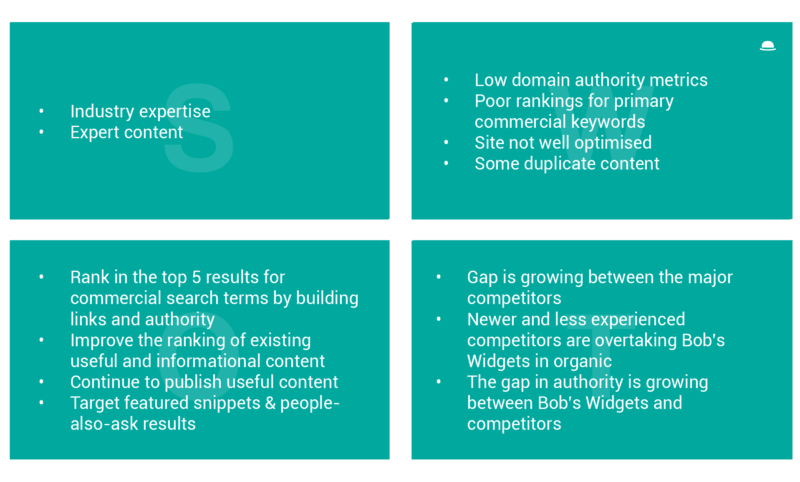
One of the primary factors search engines use to determine your organic search visibility is an organization’s relative strength and authority for a current group of keywords.
Identifying the keywords for which the organization already has some authority – or what some like to call “momentum” in the eyes of the search engines – is an excellent place to start focusing your attention.
Authority is generally hard to find and takes time to establish, so why not build on what you already have.
Your first question should be, “Which pieces of content do I have that rank well (let’s say in the top 20 results) in the search engines for my primary keyword groups?”
Recognizing where you have existing strength can be leveraged in three ways:
Searchers who land on your website looking for something specific will spend more time clicking or searching again to find the exact answer to their question.
Identify the pages you have that provide answers and focus on getting them to usurp the position currently held by the website.
If you determine that such pages do not exist, it is time to create them.
Be sure to also pay attention to the types and characteristics of your strongest pieces of content as cues for what content to create next.
For example, if you have videos that rank well on Google and/or YouTube, at least make more videos.
If long blog posts dominate the top of the search results for your primary keywords, this is your bet to publish and share more of the same.
Weaknesses
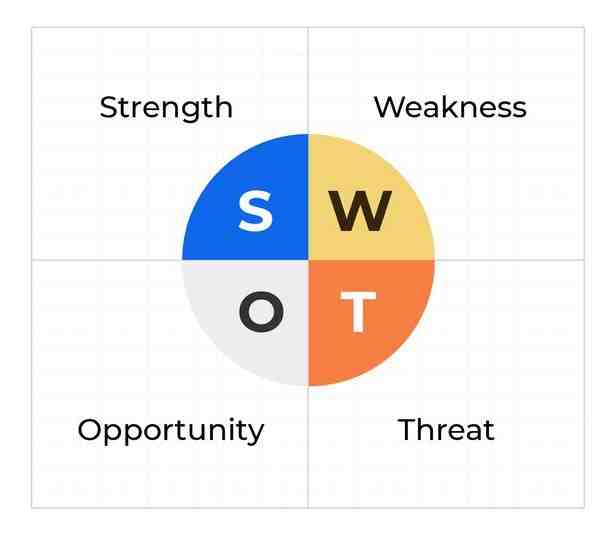
We all have our weaknesses; when it comes to SEO, recognizing and admitting them early can save us a lot of effort, time, money and lost business.
Keywords And Content
While there are undoubtedly keyword groups we feel we need to be found for, it’s important to let go of those that will take too much time and/or effort to establish authority for.
Generally, a quick review of search engine results will reveal keywords that are out of reach based on your competitors’ size, age, reputation, and content quality.
In this case, it may be necessary to look at the more specific long-tail and intent-driven keyword alternatives or consider other options (including paid) to generate visibility, traffic and conversions.
Sometimes the best strategy is to employ supplemental paid search tactics until you can establish organic search authority.
Technical Audit
Another area of weakness that you can easily control more, perhaps the quality of your own website and content from a technical/structural, keyword relevance or depth perspective.
You can begin to identify areas of weakness by performing an SEO audit.
There are several excellent free and paid tools available, including Google Lighthouse and Search Console (specifically the Core Web Vitals Report and Mobile-Friendly Test), which will provide a prioritized list of issues and/or errors found in title and heading tags, internal and external links, website code, keyword usage/density and a myriad of mobile-friendly factors.
Screenshot of Lighthouse in Chrome Dev Tools, July 2022
As mentioned above, you should start by focusing on and fixing any issues found on the pages that you already have some authority on based on search engine results.
Optimizing these pages can only help improve their chances of moving up the SERPs.
You can move on to other priority web pages based on site analytics data or strategic importance.
Backlinks
Organically obtained, relevant, high-quality backlinks (also called inbound links) are still a search engine ranking factor as they speak to and can strengthen the authority of the site to which they link.
As with auditing websites, many good third-party backlink tools can reveal where you maintain backlinks. These are especially useful for looking at the backlink sources of your strongest known competitors.
Where appropriate, reach out to get links from the same relevant sources to leverage their authority.
Opportunities
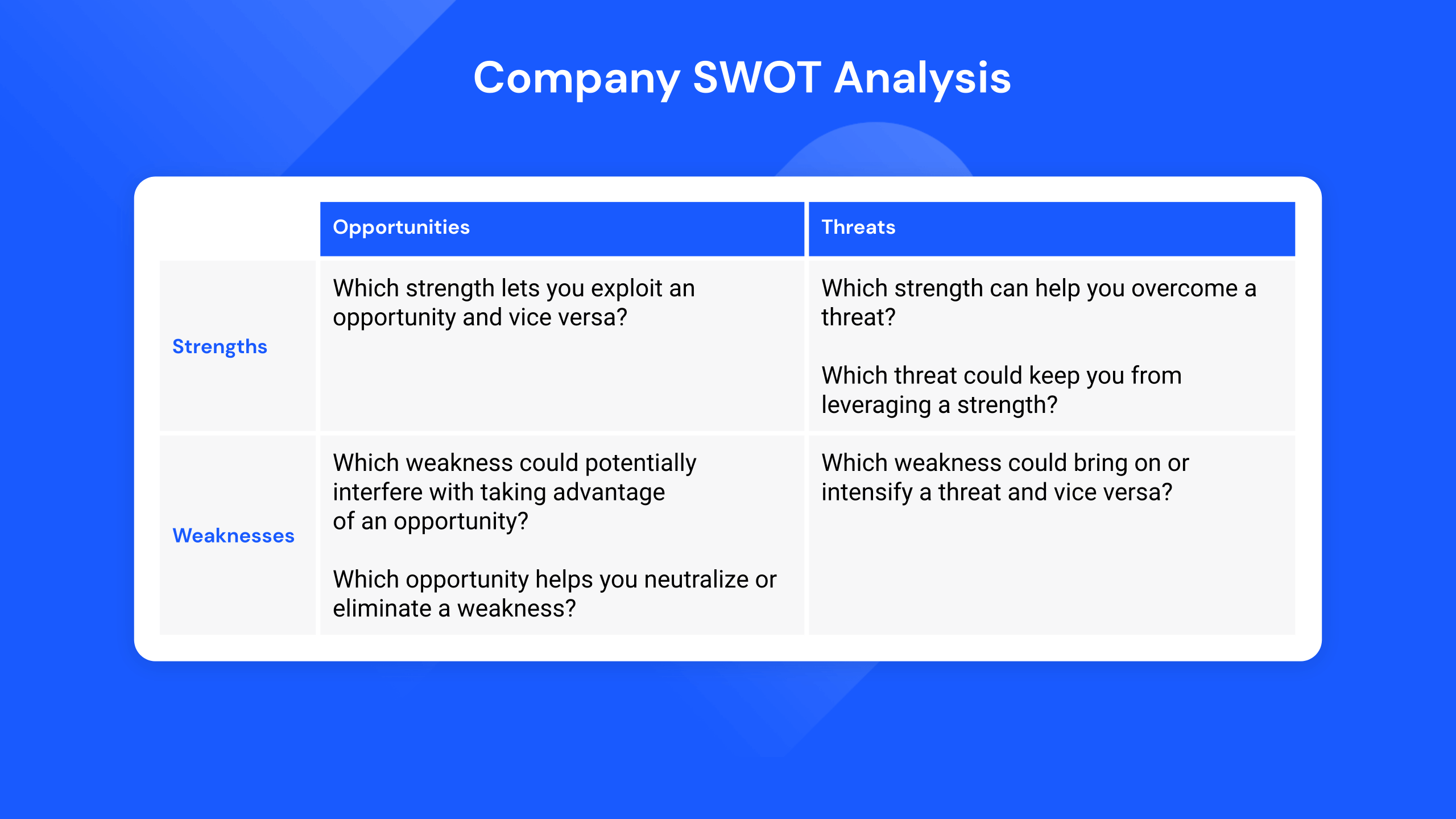
There are plenty of opportunities in SEO for those who know how, where and who take the time to look.
SEO is really about moving from one opportunity to the next.
When optimization is deemed successful for one group of keywords or pieces of content, it’s time to move on to the next topic where authority can be established or reinforced.
Keywords And Content
Several keyword research tools like Ahrefs, Semrush, and others can discover both keyword and content opportunities or gaps based on providing your website domain, the domains of your known competitors, or a targeted list of keywords.
Most provide prioritized lists of potentially valuable keywords based on estimated monthly search volumes, organic traffic and/or relative competition.
In other words: What high value keywords are your competitors ranking for that you are not?
As with the weaknesses above, part of this analysis should consider the level of effort required to achieve authority versus the potential return of establishing ecological visibility.
Screenshot of Semrush Keyword Gap tool, July 2022
Or, spend some time simply reviewing the primary pages of your biggest competitors, paying particular attention to the keywords used in title tags, headings, and internal link anchor text.
These are probably the keywords that mean the most to them.
Be careful though, as this strategy assumes that the competition has done their own keyword research and followed SEO best practices, which may or may not always be the case.
Focusing on the competitors who rank well for your primary keywords should highlight those who are consciously optimizing for search.
Content Refresh
Another option within a web presence is the update of top performing or complementary content.
First, scan the SERPs or a preferred keyword tool to identify legacy content that ranks for target keywords or serves to support other primary content pages.
Then review this content to see where there might be opportunities to update text, images, internal/external links, or other components.
Perhaps there is an opportunity to improve the piece by creating and adding images or videos.
Finally, re-share this content through appropriate channels and perhaps consider identifying new avenues – as a previously popular piece of content is likely to perform well again.
Existing content provides an excellent opportunity to build authority, often with just a little extra effort.
Backlinks
While typically a manually intensive process, there is long-term value in seeking out backlinks.
Ideally, you want to identify relevant, authoritative websites/domains from which high-quality inbound links can be obtained.
There are several sources you can use to start looking for inbound links:
The SERPs for your primary keywords are a natural starting point for backlink research, as the websites found here are by definition considered “relevant” and “authoritative” by the search engines.
Of particular interest are the sites that rank ahead of yours because they probably have higher authority that you can piggyback on.
Look for any non-competitive backlinking opportunities such as directories, association listings, or articles and blog posts that you may be able to contribute to, be mentioned in, or comment on.
The Google Search Console Links report is the second best resource for backlink research, as it lists what Google recognizes as the domains linking to your content.
Here you can validate the quality and accuracy of the links you already have, as well as determine if there are other opportunities to get additional links from the same domains.
Referral sources in Google Analytics represent external websites that send you traffic but may or may not provide an organic search boost.
Review these domains/websites regularly for other link opportunities.
4. As mentioned under Weaknesses, several third party backlink tools can be used to identify potential backlink sources where links to your competitors can be found.
Some will even help by authority ranking and prioritizing the value of each existing and potential source, which can save significant time.
Threats
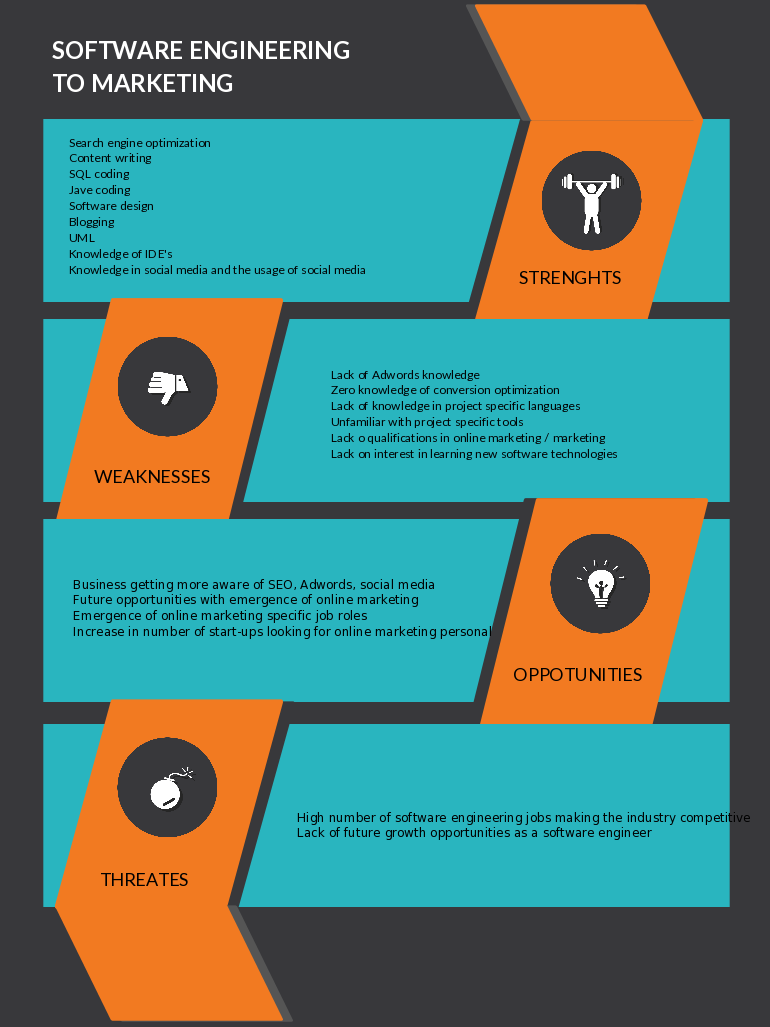
Whether done on purpose or not, there are more than a few things that can threaten organic authority in the eyes of search engines and should be prioritized to avoid potentially damaging penalties.
Content
The primary content threat most people are familiar with is duplicate content, which, as the name suggests, is content that is reused on a website without proper attribution to the original source.
To avoid being penalized for using this type of content, be sure to include rel canonical tags by referencing the source content in the headers of pages containing the duplicate content.
In other words: It’s okay to have some duplicate content on a website as long as the original source is properly identified.
Backlinks
While high-quality relevant backlinks can help increase your authority, low-quality irrelevant inbound links from sites that are not reputable (especially those that are part of paid link schemes) can do long-term damage and even get you tagged with a manual penalty.
The threat here is a potential loss of organic visibility and traffic.
Furthermore, recovering from a manual penalty is not an easy or quick process.
In short, you should never pay for backlinks and ensure that any backlinks you acquire have not been purchased on your behalf by a third party, like a marketing agency.
As such, you should regularly review the Google Search Console links report or other backlink reporting sources for questionable domains or those you do not recognize as relevant.
Competitors
All online competitors who create their own content represent threats to your authority.
Even if you maintain strong organic visibility and traffic relative to your “known” competitors, there is always the potential for new, aggressive or unknown competitors to enter the field.
Many of the aforementioned SEO tools provide competitor discovery tools to quickly identify domains that consistently appear in search results for your primary keywords.
Often there may be competitors here that you have never considered. Naturally, you will want to pay attention to these competitors and use the tactics mentioned above to see what you can learn from them.
Search engines love and reward fresh, relevant content, and Google even has a freshness algorithm to identify it.
As such, you should regularly monitor search engine results for new entrants, which may challenge your authority and position over time.
Of course, the best way to combat this type of threat is to continue to publish and update your own extensive content, which will give search engines less reason to question your authority.
Actioning On The SWOT
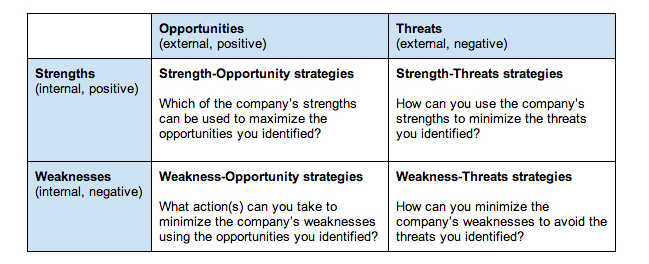
The detailed SWOT outputs will map priority actions to protect and/or improve online authority, visibility and resulting traffic, leads and revenue.
Proactive search marketers should perform these analyzes on at least a semi-annual, if not quarterly, basis, depending on how competitive the industry is and how active competitors are.
A well-structured SWOT can provide an excellent roadmap for where, when, and how often to act or create and share content to boost your organization’s primary SEO goals.
Featured Image: Rawpixel.com/Shutterstock
What are the 4 steps of SWOT analysis?
SWOT analysis – A step by step guide
- First, determine the strengths of your business.
- Second, Determine the weaknesses of your business.
- Third, Determine the opportunities for your business.
- Fourth, determine the threats to your business.
- Act on your SWOT analysis.
- In conclusion,
What are the four types of strategies in SWOT matrix? The Strengths-Weaknesses-Opportunities-Threats (SWOT) Matrix is an important matching tool that helps managers develop four types of strategies: SO (Strengths-Opportunities) strategies, WO (Weaknesses-Opportunities) strategies, ST (Strengths-Threats) strategies, and WT strategies (weaknesses-threats).
What are the three steps of SWOT analysis?
A. to identify the company’s resource strengths and weaknesses and its opportunities and threats, draw conclusions about the company’s overall situation and translate the conclusions into strategic actions to improve the company’s strategy.
What are the 3 C’s impacted by SWOT analysis?
This method makes you focus your analysis on the 3Cs or the strategic triangle: the customers, the competitors and the company. By analyzing these three elements, you will be able to find the Key Success Factor (KSF) and create a sustainable marketing strategy.
What are 3 major benefits of a SWOT analysis?
address weaknesses. deter threats. take advantage of opportunities. utilize your strengths.
What are the 2 types of SEO?
So the different SEO types are: Technical SEO. On-Page SEO. Content SEO.
What are the different types of SEO? The three types of SEO are: On-page SEO – Everything on your web pages – Blogs, product copy, web copy. Off-page SEO – Anything that happens away from your website that helps your SEO strategy backlinks. Technical SEO – Anything technical done to improve search rankings – site indexing to help bot crawl.
What is SEO onpage and Offpage?
On-page SEO refers to SEO factors and techniques focused on optimizing aspects of your website that you have control over. Off-page SEO refers to SEO factors and strategies that focus on promoting your website or brand around the web.
What is SEO Onpage?
On-page optimization (AKA on-page SEO) refers to all actions that can be taken directly on the website to improve its position in the search rankings. Examples of this include measures to optimize the content or improve the meta description and title tags.
What is Offpage in SEO?
“Off-site SEO” (also called “off-site SEO”) refers to actions taken outside of your own website to influence your rankings on search engine results pages (SERPs). Along with on-page SEO, these include several of the factors of basic SEO that help a website rank.
What is the on-page & off-page SEO process?
On-page SEO includes providing good content, good keyword selection, putting keywords in the right places, giving a suitable title for each page, etc. Off-page SEO includes link building, increasing link popularity, search engine, link exchange, etc. 2. On-page SEO will analyze the entire website.
What is the purpose of SEO?
The SEO process aims to increase a company’s organic search results, which drives organic search traffic to the website. This enables data marketers to distinguish between traffic coming to a website from other channels – such as paid search, social media, referrals and direct – and organic search traffic.
What is SEO and how does it work? Well, SEO stands for ‘Search Engine Optimization’ which is the process of getting traffic from free, organic, editorial or natural search engine results. It aims to improve your site’s ranking on search results pages. Remember, the higher the website is listed, the more people will see it.
What is SEO in simple terms?
SEO stands for search engine optimization, which is a set of practices designed to improve the appearance and ranking of web pages in organic search results.
What is SEO in easy language?
SEO stands for “search engine optimization.” Simply put, it means the process of improving your website to increase its visibility when people search for products or services related to your business in Google, Bing and other search engines.
What is SEO give an example?
Businesses look to search engine optimization, or SEO, to help gain more awareness and to make their business rank higher in a search engine. SEO is used through search engines like Google, Yahoo, MSN, Bing, etc.
What is SEO in digital marketing?
SEO stands for Search Engine Optimization and is the process used to optimize a website’s technical configuration, content relevance and link popularity so that its pages can become easily accessible, more relevant and popular in relation to users’ search queries and, as a consequence, search engines rank them better.
What is SEO in simple words?
SEO stands for search engine optimization – so much has remained the same. It refers to techniques that help your website rank higher on search engine results pages (SERPs).
What is SEO and examples?
Off-page SEO refers to actions that you can take outside of your own website to increase its ranking, such as link building or guest blogging. There are also two styles of SEO: White Hat and Black Hat SEO. White hat SEO is based on using ethical, transparent techniques to build your pages’ rankings.
What is Internet SWOT analysis?
SWOT analysis of Internet Explorer analyzes the brand according to its strengths, weaknesses, opportunities and threats. In Internet Explorer SWOT analysis, the strengths and weaknesses are the internal factors, while opportunities and threats are the external factors.
What does SWOT analysis explain? SWOT analysis is a framework for identifying and analyzing an organization’s strengths, weaknesses, opportunities and threats. These words make up the SWOT acronym. The primary goal of SWOT analysis is to increase awareness of the factors that go into making a business decision or establishing a business strategy.
SWOT in SWOT analysis stands for strengths, weaknesses, opportunities and threats. Understanding how to identify each of these areas will help you strengthen your overall social media strategy.
What is the SWOT analysis for Facebook?
A SWOT analysis of Facebook means examining the strengths, weaknesses, opportunities and threats that affect the company. It currently remains the king of social media with over 2 billion monthly active users, despite repeated controversies over the past year.
What is SWOT analysis and examples?
SWOT stands for Strengths, Weaknesses, Opportunities and Threats. Strengths and weaknesses are internal to your business – things that you have some control over and can change. Examples include who is on your team, your patents and intellectual property rights, and your location.
What is SWOT analysis and examples?
SWOT stands for Strengths, Weaknesses, Opportunities and Threats. Strengths and weaknesses are internal to your business – things that you have some control over and can change. Examples include who is on your team, your patents and intellectual property rights, and your location.
What are examples of SWOT threats?
Examples of threats for a personal SWOT analysis might include increased competition, lack of support, or language barriers. Examples of threats to businesses may include economic downturns, increased taxes, or the loss of key employees.
What is an example of a strength used in a SWOT analysis?
1. Technological advantage. If you have a technological advantage over any other competitor, that is a great strength for you. The best technology leaders of the century each have a technological advantage over the other.
What is the SWOT analysis of online business?
A SWOT analysis is a technique for finding out the internal and external factors that make a business successful or not. In other words, it is a tool for analyzing in detail how your webshop is performing in order to design a long-term strategy.
What are the SWOT Opportunities examples?
Examples of opportunities for a SWOT analysis might include training, internships or career moves. Examples of opportunities for businesses include market growth, new technologies or new investments.
What is the strength of online business?
E-business gives you and your customers access 24 hours a day, seven days a week. You can link your online order entry component to a real-time inventory tracking program, and your customers can place orders with up-to-date information at any time of the day or night.
What is SWOT analysis in digital marketing?
A SWOT analysis is a framework used by marketing teams to identify their internal strengths and weaknesses and the external factors that could affect the way their organization runs. There are four components that make up a SWOT analysis: Strengths. Weaknesses. Options.
What is the most important part of the SWOT analysis?
Evaluate Strengths and Weaknesses The first is the analysis of strengths and weaknesses. This part is the opportunity to look internally at what the organization is doing well and identify the areas where improvement is needed. You can direct this to a specific initiative, process or the organization as a whole.
What is the importance of SWOT analysis essay? SWOT analysis is a simple but useful framework for analyzing your organization’s strengths, weaknesses, opportunities and threats that you face. It helps you focus on your strengths, minimize threats and make the most of the opportunities you have.
What information is important to add to a SWOT?
The four points in a proper SWOT analysis are strengths, weaknesses, opportunities and threats. Strengths and weaknesses focus internally on the business being evaluated, while opportunities and threats look at competition and things going on externally.
What are the 4 terms in a SWOT analysis?
SWOT stands for Strengths, Weaknesses, Opportunities and Threats, and therefore a SWOT analysis is a technique for assessing these four aspects of your business.
What is SWOT analysis used for?
A SWOT analysis will help you identify areas of your business that are performing well. These areas are your critical success factors and they give your business its competitive edge. Identifying these strengths can help you ensure you maintain them so you don’t lose your competitive edge.
What is a SWOT analysis example?
Examples include competitors, prices of raw materials and customer shopping trends. A SWOT analysis organizes your best strengths, weaknesses, opportunities and threats into an organized list and is usually presented in a simple two-by-two grid.
What are the two important factors in SWOT?
A SWOT (Strengths, Weaknesses, Opportunities and Threats) analysis looks at internal and external factors that may affect your business. Internal factors are your strengths and weaknesses. External factors are the threats and opportunities.
What are the 2 factors of SWOT?
Basically, a SWOT analysis is an examination of the internal and external factors that affect the organization and its strategies. The internal factors are strengths and weaknesses; the external factors are opportunities and threats.
What is the important element of SWOT analysis?
In a nutshell, a SWOT analysis gives you a bird’s eye view of the current situation in an organization. The most important factor in a SWOT analysis is the quality of data. Therefore, it is important to accurately capture the strengths, weaknesses, opportunities and threats.
